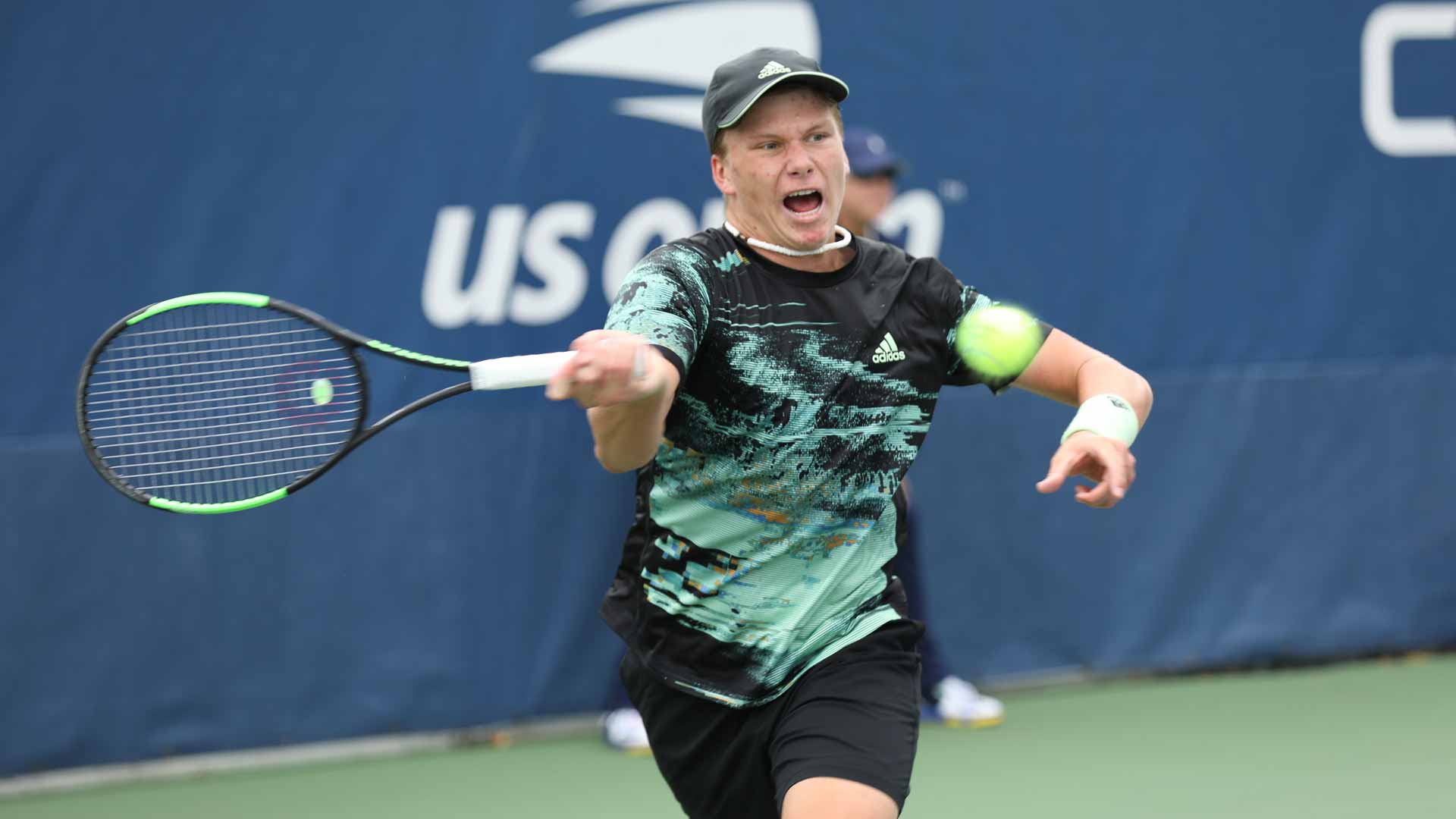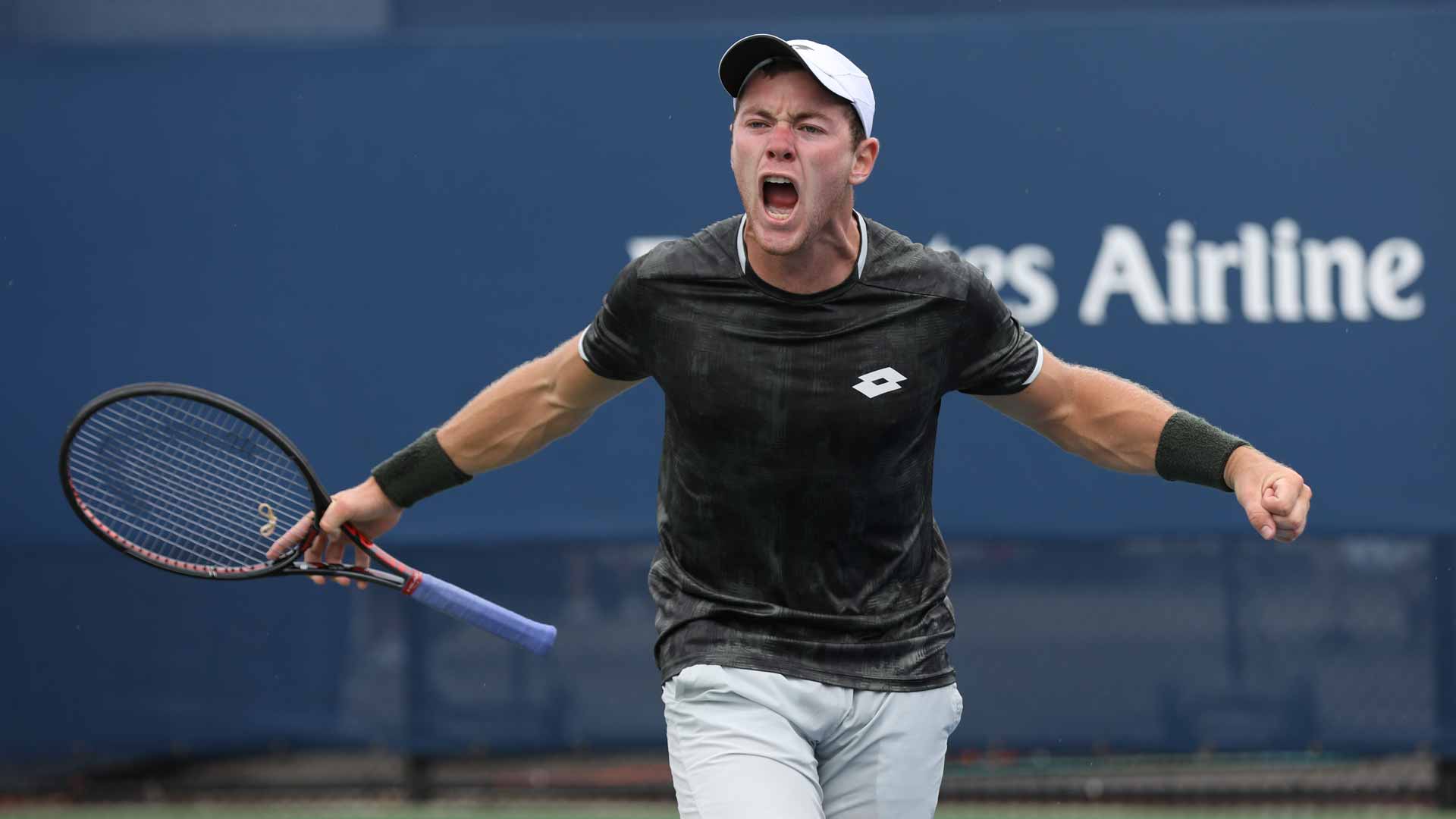John Millman Reflects On Federer US Open Stunner Before Facing Nadal
John Millman Reflects On Federer US Open Stunner Before Facing Nadal
In the first round of the US Open, John Millman will have his work cut out for him against three-time champion Rafael Nadal, the second seed. In their only previous meeting, at Wimbledon two years ago, Nadal conceded only six games against the Aussie. But the 30-year-old has defied the odds before.
Millman shocked the world here in New York just last year when he ousted five-time champion Roger Federer 3-6, 7-5, 7-6(7), 7-6(3) to reach the quarter-finals. Federer had missed the last eight in Flushing Meadows just once in his previous 13 appearances. But when the Swiss superstar launched a forehand well long on match point, the Aussie calmly removed his cap and walked to the net to shake hands as the victor.
“I think one of the most important things about your tennis career and what I want to take away from it when I’m finished is a couple of little pictures that you store away in the memory bank,” Millman told ATPTour.com. “I still store away that match point when I won that one and it’s something I’ll hopefully take with me long after tennis.”
Before last year’s tournament, Millman hit with former World No. 1 Andy Murray inside Arthur Ashe Stadium. After the pair tried launching 20 to 30 balls towards the scoreboard, the Aussie didn’t necessarily expect to play on the court again during the fortnight. But after three victories, there he was walking onto a court with the capacity for more than 23,000 fans to sit layered above him, watching him upset a worldwide fan favourite.
“You’re just trying to tell yourself when you’re walking onto that court in that warm-up to try to get the feet going and try to just familiarise yourself with your surroundings as quickly as possible because it’s different,” Millman said. “It’s a massive stadium and it’s one of those places you watched as a kid.”
Then World No. 55, Millman had never previously beaten an opponent inside the Top 10 of the ATP Rankings (0-10). But Federer did not have it easy in their first FedEx ATP Head2Head meeting three years prior in Brisbane, needing three sets and more than two hours to triumph. So Millman wasn’t totally uncomfortable in the moment.
“I’m lucky probably that I’d faced him before and I faced him in Brisbane where there was a fair bit of pressure on me because you’re playing at home and the last thing you want to do is get whipped in front of your home crowd and home support,” Millman said. “So I felt as if I’d played him under a bit of pressure before and that definitely helped going into that match.”
It’s easy to forget that Federer was in control against the Aussie, making Millman feel like a “deer in headlights” at the beginning of the match. The Swiss, who admittedly struggled with the humidity, led by a set and served for the second set at 5-4 with two set points, but couldn’t convert. Millman bided his time, maintained a steady level, and never dropped his chin, hanging in there until he was able to find an opening and barge through it.
“Against some pretty good players I’d put myself in a position on pretty decent stages,” Millman said. “But the hardest thing is actually running through that finish line… when I finished there was probably a bit of relief and just a little bit of satisfaction and at the same time I acknowledge the fact that I got Roger on not his best day and that was my opportunity and I took it.”
Once Federer’s final forehand flew long, a whirlwind of a journey began for Millman. First, he endeared himself to the fans who stayed up late that evening by telling them he planned to wake up in mere hours for a fantasy football draft with friends.
“Literally the next day was the last time we could do it because Thursday Night Football was right around the corner. My mind was also on the draft, and you need to have those little things in tennis, too. Especially as an Australian, because we have to be away for a long, long time. And you need those little escapes,” Millman said.
The following day, Millman was a man in demand, completing a media tour. A friend had flown in after he defeated Mikhail Kukushkin in the third round, and a couple more booked tickets after he defeated Federer to watch their buddy take on Novak Djokovic. Millman earned a massive triumph, but he wasn’t ready for his dream run to be over.
“Obviously when you’re a kid, you don’t imagine just winning the one-off match,” Millman said. “You imagine winning the whole thing.”
Millman lost in the next round against the eventual champion, Djokovic. But for a player who had never previously made the fourth round of a Grand Slam, it was an unforgettable tournament. It was made even more special because of how much New York has meant to Millman. In 2010, he visited the city for the first time when his parents got him an early birthday present, booking him accommodations in Manhattan after losing at an ATP Challenger Tour event in Tallahassee in 2010.
Millman watched as soon-to-be drafted athletes entered Radio City Music Hall for the NFL Draft, and he also went to see a show. The Aussie loved the city. But little did he know that nearly a decade later he would captivate the city’s attention himself.
“That’s tennis, and that’s what’s beautiful about tennis. You start off regardless of who you play, it’s 0-0. It’s a game for the next two, three, four hours. It’s you versus the other person and anything can happen,” Millman said. “Very rarely do you have those games where everything goes right and you feel amazing. It doesn’t happen, so you’ve got to be there to capitalise when they’re not having one of those special days.”
Millman will try to cause another upset against Nadal.





